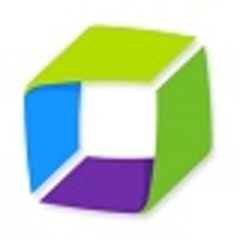We use it mainly to debug, control performance and KPIs of a tourism company. We can provide dashboards to business.

We use it mainly to debug, control performance and KPIs of a tourism company. We can provide dashboards to business.
With Dynatrace, we can be more productive and agile. It allows us to be more accurate when we need to work with bugs.
The ability to go deep into production code. With this tool, we can work with bugs like no other tool can.
The dashboard tool needs to be improved. We need more options, because the look and feel is too old-fashioned.
Identifying performance bottlenecks on load testing environments. Before launching new code into production, it is imperative to know if performance issues will arise.
It prevents (together with performance testing) production performance issues which usually result in customer complaints or system downtime.
The product capabilities all together are valuable. You get a good insight into what is going on inside your code.
Application monitoring on our clients environments, including microservices, JVM, .NET, and many other technologies
Real user monitoring is one of the best things in solution. The possibility to analyze any particular user session is wonderful.
The product is really fast to implement and gives customers instant value. This is important, because it reduces costs on the implementation.
We are implementing software on our clients' environments
We use JS, JVM, stack, PHP, and Python. We use database and NoSQL solutions, such as Redis, MongoDB, and Hadoop.
Dynatrace is a good monitoring tool. It helps DevOps find all its problems easily and analyzes performance problems.
Dynatrace united some monitoring tools, such as app monitoring, JVM, PHP, network, log analyzer, etc.
A role-based view and a Python monitoring tool would make a simple user interface more usable.
Dynatrace provides visibility into the application and its performance from the user to back-end services.
Details of EUM: It helps the entire team, including our management, our application owners, and DB owners.
Adds value to application owners, DB owners, and provides visibility on how end users utilize browsers and where they are originate from.
The most valuable features are end user visibility, Smartscape, and the entire visibility of our data center, including SQL queries.
Cloud monitoring and reporting need improvement, as well as how to manipulate data and export it to share with business executives.
It reduces time and provides detailed info, showing problem correlation, and a single point of diagnosis.
With nothing more than three commands, or a simple dockable container, everything was executed in minutes. In one week, we had enough customizations to be ready for production.
It would have taken us at least two months to hire another person from SysOps to achieve registration, supervision, alerts, and APM implemented with cheaper or free open source solutions. It was much cheaper and faster to go with Dynatrace.
We had users in a remote office complaining about the latency of the application and were able to determine the problem derived from the configuration of a router with the help of Dynatrace.
Dynatrace has designed its agents to capture limited stack traces for each transaction executed. It is a product that helps developers, testers, and operations to make sure their applications work quickly and reliably.
We also love the automatic alerts. Dynatrace alerts are based on deviations from the reference metrics which are constantly collected.
The one thing that I do not like about Dynatrace is their Web UI dashboards are very slow. They seriously have to improve their Web UI dashboard configuration and SSL timeouts.
No other provider provides record ingestion, Kubernetes/docker monitoring, and application monitoring for Node.js. Some competitors offer aspects of these, and some offer all these, but not with Node.js.
Dynatrace was the perfect fit.
Dynatrace was an incredible find!

